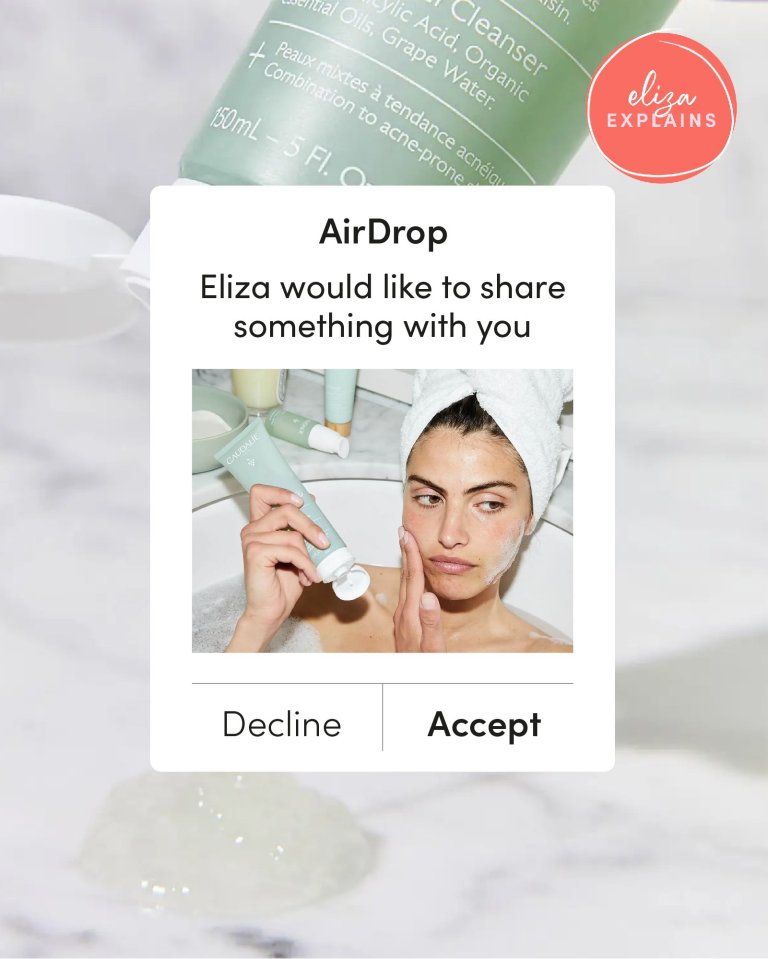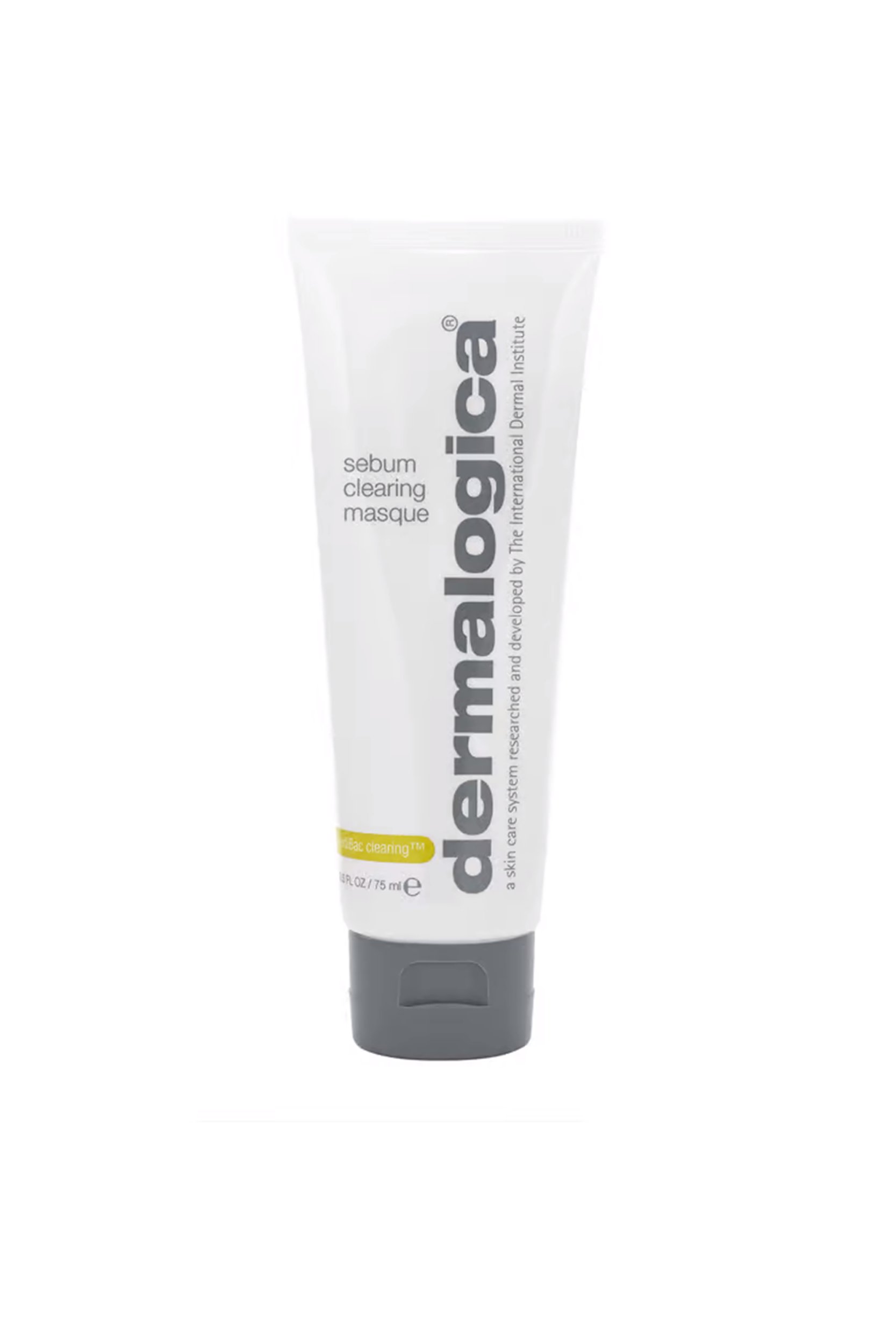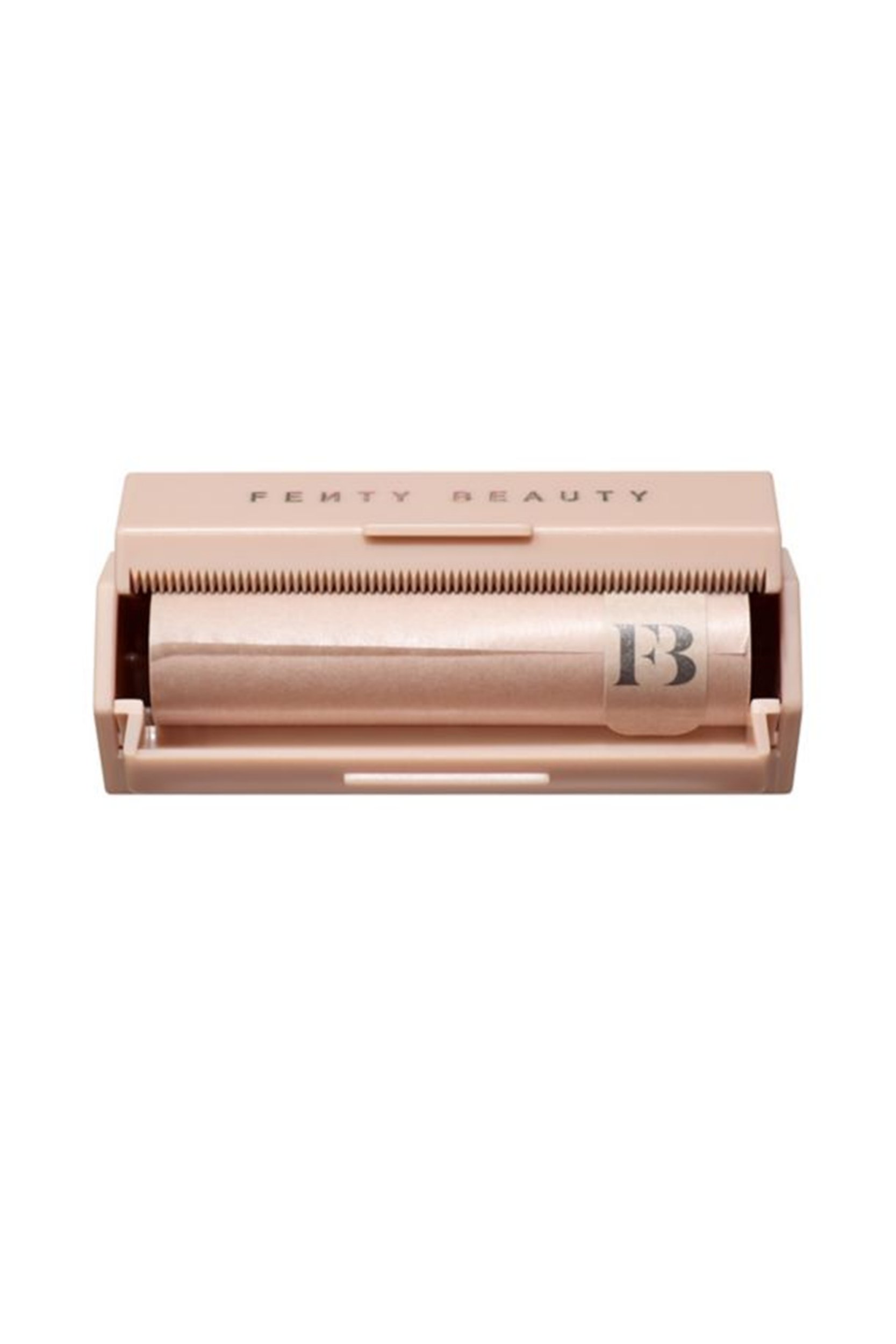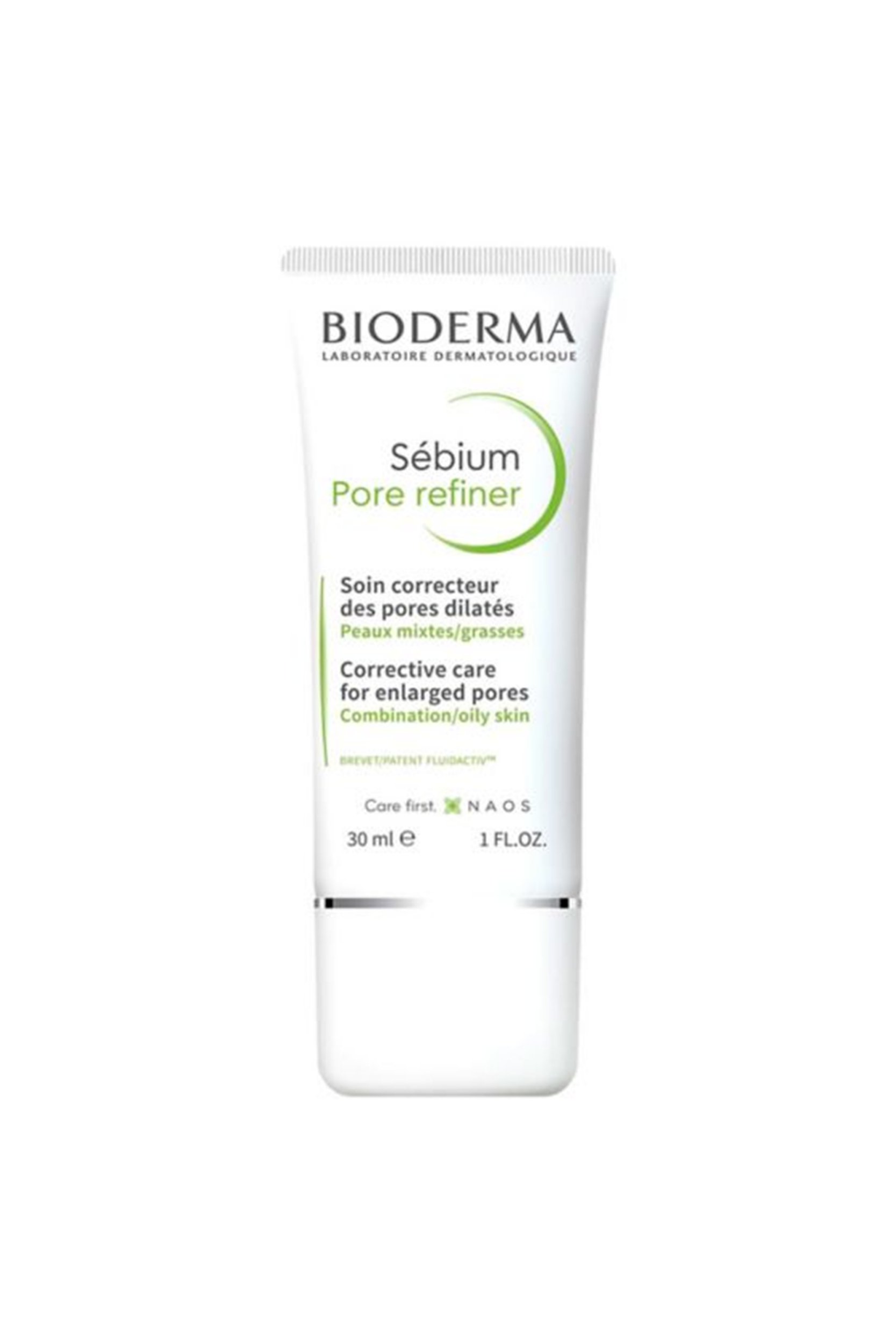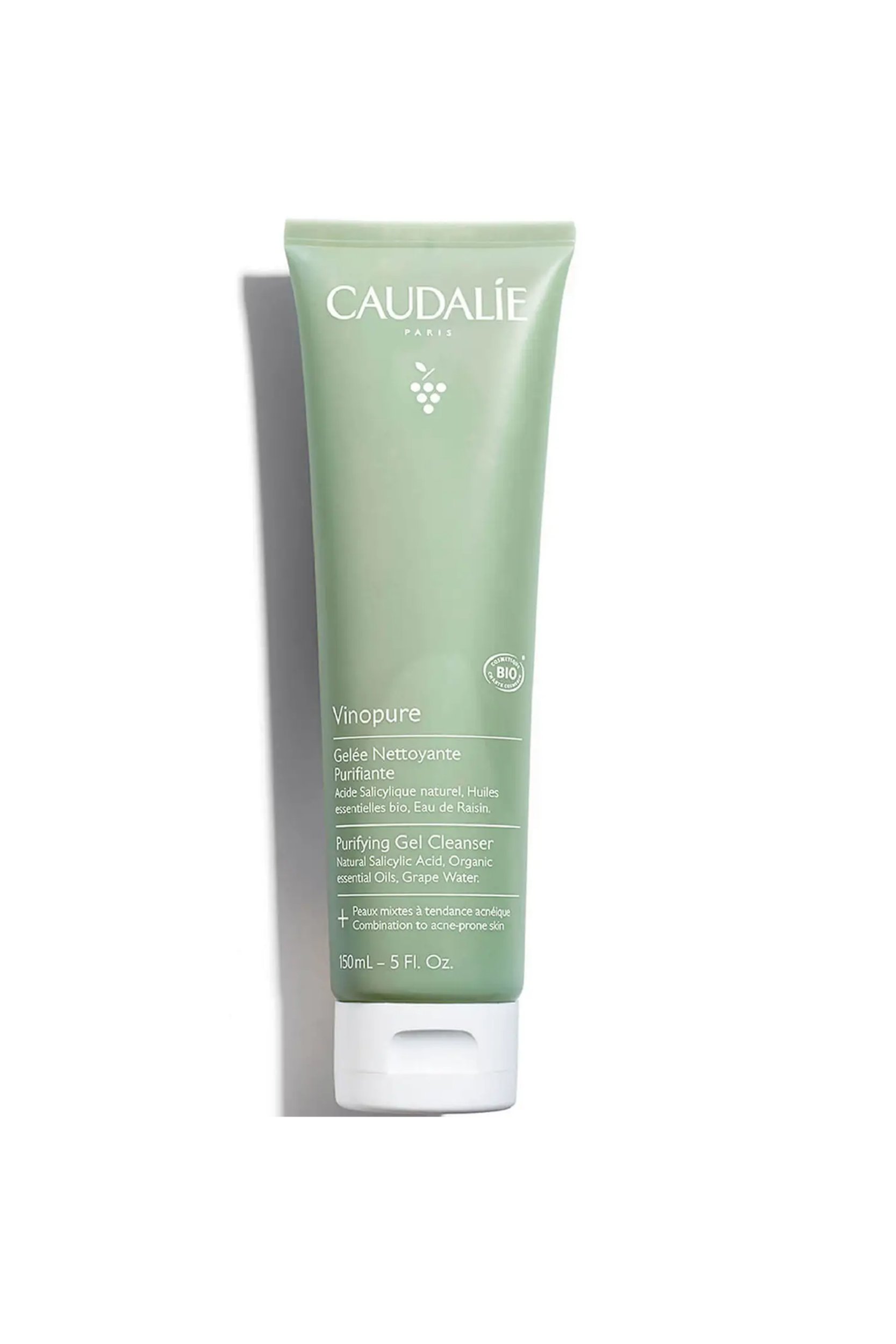Demystifying ingredients, clarifying how to apply products and revealing everything you’ve always wanted to know about skin types; Eliza Explains will help you become a beauty pro.
Sebum. It’s a word that only came into my own vocabulary once I started working in the beauty industry, but something that had I come to understand earlier in my teenage years, might have saved me some serious skin aggravation.
The thing is, sebum has earned itself a bit of bad reputation, and not entirely fairly. You’ll often hear it being discussed in relation to acne and blemishes, and subsequently, sebum has come to exist as a bit of a skincare bogeyman.
But really, sebum isn’t all bad. In fact, it plays an integral role in keeping our skin moisturised and protected, so arming yourself with the knowledge of this slick (and I’ll admit, slightly gross sounding) substance is important when it comes to building a skincare routine that works best for you.
What is sebum?
Sebum is an oily substance produced by your sebaceous glands, which are present in the skin all over your body. This means your sebum levels not only affect how the skin on your face looks and feels, but the rest of your body as well. It’s made from a mix of fatty acids, sugars, waxes and other naturally produced chemicals, which form to create a protective layer on your skin, shielding it from bad bacteria.
Our skin barrier has started to get a lot of attention over the past couple of years with creams, serums and balms all designed to fortify our skin’s defense (along with entire brands, such as BYOMA), but it’s actually sebum that forms one of the main components of our skin barrier. Who knew, right?
While it’s great that our skin produces sebum naturally, imbalances in sebum production can indeed lead to skin issues, which is where topical skincare can provide a helping hand to get you back on balance.
As they say, too much of a good thing…
Is too much of it bad for your skin?
The amount of sebum we produce varies from person to person (which we’ll dive into later), but it can also show up via a variety of different issues on your skin. “Too much sebum can cause plugged-up glands (called sebaceous hyperplasia), which can lead to acne and breakouts,” explains Dr Sonia Khorana.
“Another condition called seborrheic dermatitis can develop when an overproduction of sebum mixes with yeast – this causes flaking, red and itchy skin on the forehead, cheeks, and scalp.”
However, it’s not only over-productive sebaceous glands that can lead to skin problems. Due to its important role in the maintenance of your skin barrier, a lack of sebum can leave you with dry and dull skin. This is where occlusive creams and balms, such as the Hemp Oil 24hr Rescue Cream, £9.99, Holland and Barrett, will help to nourish the skin and prevent moisture from escaping.
What affects our sebum production?
“Hormones are the primary driving force behind sebum production, specifically sex hormones called androgens, whether they fluctuate naturally, because of a medication, or an underlying condition,” says Dr Khorana.
“Sebum levels will also change with age due to hormonal influences – they’re high at birth but soon decline until puberty, when they then spike again, coinciding with when most people experience significant acne. After our teenage years, sebum production remains pretty steady through mid-adulthood, but after this it continuously declines and we see drier skin as we age.”
Though it sounds like we’re pretty much at the whim of our hormones, there are steps that can be taken to get over or under-productive sebum back on track. Roaccutane, and even certain birth pills, can be prescribed to help with severe acne due to their ability to change our hormone levels. It’s important to speak to a doctor about the best steps.
But before you get start hacking your hormones, making a few tweaks to your skincare routine can also help to keep excess sebum production at bay…
Which skincare ingredients are good for balancing production?
One of the most common mistakes that those with oilier skin types run into is using too many harsh ingredients in a bid to strip the skin of all its oils, which as Dr Khorana explains, can lead to more sensitivity and dryness; not ideal. Instead, she recommends keeping an eye out for products that include the following ingredients and incorporating them into your skincare routine:
- Niacinamide
- Salicylic acid
- Vitamin A
- Dimethicone
- Zinc
Salicylic acid and niacinamide are often a good starting place as they work well with most skin types, and while Vitamin A can be quite harsh for those with sensitive skin, retinols have been shown to do wonders for skin texture and appearance, so they’re well worth considering in gentle formulations for those whose skin can take it.
Overwhelmed by what’s on offer? Scroll on to find some of the best products for helping to balance out sebum-imbalanced skin.
Best products for balancing sebum
Dermalogica Sebum Clearing Masque, £45
If breakouts seem to crop up in certain areas, using a mask a couple of times a week can help to keep sebum levels in those places under control. This clay-based mask from Dermalogica includes a duo of kaolin and bentonite clay to draw out impurities and excess oils, while salicylic acid gets to work exfoliating and breaking down any gunk clogging your pores.
Ole Henriksen Balancing Force Oil Control Toner, £25
Toners are a key step for those who are acne-prone, as they help to balance out the oil in your skin and prep it for the rest of your routine. This toner from Ole Henriksen has been formulated with salicylic, glycolic and lactic acid to specifically target the appearance of pores, and to keep oil production at bay for the rest of the day, leaving your skin with a mattified (but not tight) finish.
Fenty Beauty Invisimatte Blotting Paper, £15
For when excessive shine (read: sebum) strikes throughout the day, make sure you have a portable stash of blotting papers with you. You can’t get much chicer than these ones from Fenty, which allow you to take exactly how much paper you need. Whether you’ve got a full beat of makeup on or have gone au naturel for the day, simply press and roll onto the skin to soak up excess oil without disturbing your base.
Face Period Face Mask, £27
A brand that understands how hormones can wreak havoc with our skin, Faace have devised a face mask to tackle with the skincare issues that tend to tag along with that time of the month. We’re talking blemishes, overly oily skin, and super dehydrated skin, because often they’re not as mutually exclusive as you might first believe.
Formulated with a superhero squad of hyaluronic acid, clary sage, green tea, zinc and white willow, this mask is versatile in more than just its ingredients: you can leave it on overnight or wear as a primer underneath your makeup. If only the rest of our period was that easy.
Bioderma Sebium Pore Refining Cream, £15.50
If your skin tends to go overkill with its sebum production, you might be tempted to skip out on the moisturiser – but don’t. Your skin still needs hydration (skin that’s too dry will produce even more sebum, and so begins the endless cycle), so opt for a moisturiser that’s light in texture, such as a gel, which won’t block up your pores but will keep hydration locked in.
As well as its non-comedogenic formula, this moisturiser contains salicylic acid to exfoliate pores and dislodge any build-up, bakuchiol to help even skin tone and improve firmness, and squalane to hydrate. A power trio.
Caudalie Vinopure Purifying Gel Cleanser, £16
Ideal as a morning cleanser and second evening cleanse for those with oily skin types, Caudalie’s Vinopure gel cleanser is gentle on the skin, harnessing salicylic acid and essential oils to soothe and cleanse skin while breaking down any excess oil build-up. While a lot of purifying cleansers can leave your skin feeling unpleasantly stripped (that’ll be the SLS), this one left us feeling refreshed and hydrated.
